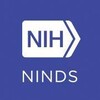
The Association Between Non-vitamin K Antagonist Oral Anticoagulant Therapy and Acute Stroke Severity...
Therapeutic Drug MonitoringNon-vitamin K antagonist oral anticoagulant (NOAC) is the first line therapy to prevent thromboembolism in atrial fibrillation (AF) patients. Previous investigation showed that preceding NOAC therapy was associated with lower severity of ischemic stroke, but with higher in-hospital mortality in intracerebral hemorrhage (ICH), as compared with antithrombotic agent non-users. Measurement of NOAC level upon acute stroke aids the critical decision of acute management. Real-world data regarding the relationship between the NOAC adherence, the appropriateness of NOAC regimen, or NOAC level in acute stroke and the stroke severity or short-term outcome is lacking. Further, optimal selection for long-term stroke prevention among patients with acute stroke during NOAC therapy remains unclear. Specific purpose: To analyze the association between NOAC adherence or NOAC level upon acute stroke and stroke severity or stroke outcomes, and analyze the impact of starting or withholding antithrombotic therapy after acute stroke on long-term stroke outcomes. Specific Aim (Year 1): To investigate the relationship between NOAC adherence or appropriateness of NOAC dose and acute stroke severity or in-hospital mortality based on National Health Insurance Research Database (NHIRD). Another important goal is to prospectively establish a cohort of AF users who developed acute stroke during NOAC therapy in National Taiwan University Hospital (NTUH) (target: around 100 patients annually), measure the NOAC level upon hospital arrival, record stroke severity, 90-days functional outcomes, post-stroke antithrombotic agents and repeat stable NOAC level in patients who restart NOAC treatment. Specific Aim (Year 2): To investigate the relationship between post-stroke antithrombotic therapy, especially changing or retaining preceding NOAC and long-term stroke outcomes based on NHIRD. We will also keep enrolling the prospective cohort and follow the 1-year stroke outcome. Specific Aim (Year 3): To complete the process of study enrollment (total: 300 patients) and conduct statistical analysis. The main goal is to finish the Aim 1 and 2 based on NHIRD. In addition, to provide data of emergent NOAC level and stroke severity or short-term outcome, and post-stroke antithrombotic therapy and long-term outcomes based on the prospectively enrolled cohort.

Predictive Study of Serum Endocan for Hemorrhagic Transformation After Reperfusion Therapies in...
Acute Ischemic StrokeStroke is the second largest cause of death globally after ischemic heart disease.Of the total number of prevalent strokes, 84.4% are ischemic. Reperfusion therapy is the most important treatment for acute ischemic stroke (AIS) ,including intravenous thrombolysis and/or endovascular treatment.However,the most serious and common complication with reperfusion therapy is hemorrhage transformation(HT),which significantly increases disability and mortality. The fundamental mechanism leading to post-stroke HT is the disruption of the blood brain barrier(BBB) and increase of permeability.Endocan plays a critical role in vascular inflammatory responses by enhances the production of pro-inflammatory cytokines by endothelial cells,the expression of adhesion molecules such as inter-cellular adhesion molecule-1(ICAM-1) and vascular cell adhesion molecule-1(VCAM-1),and the adhesion of leukocytes to endothelial cells. Endocan significantly decreases levels of zonula occludens(ZO-1) and occludin which are tight junction proteins that play major roles in the maintenance of vascular barriers. Endocan could induce vascular endothelial growth factor-A(VEGF-A) and facilitate the binding of VEGF-A to its receptor(VEGFR-2) to enhanced endothelial permeability.Therefore,endocan is a reliable biomarker of endothelial dysfunction, which may be associated with disruption of the BBB. In this context, the investigators hypothesized that elevated pretreatment serum endocan levels might be independently associated with HT after reperfusion therapy in the acute phase of ischemic stroke. Serum endocan,ICAM-1,VCAM-1 and matrix metalloproteinase-9(MMP-9) levels will be determined by enzyme-linked immunosorbent assay(ELISA) in blood samples obtained at baseline (pretreatment) and at 12,24 hours after reperfusion therapy in patients with acute stroke and in healthy subjects.In the present study,the investigators attempt to investigate whether high levels of endocan are associated with HT in patients who received reperfusion therapy.In addition,the investigators explore the association between serum endocan and early neurological deterioration and unfavourable short-term prognosis.

Screening Protocol for Patients With Stroke
Chronic StrokeBackground: Stroke, also known as acute cerebrovascular attack, is the leading cause of long-term disability worldwide. Stroke survivors are often left with permanent physical and mental disabilities. Many stroke patients receive different therapies in an attempt to improve their independence and quality of life. However, current strategies are focused on the acute stage after stroke and are of limited influence in improving stroke outcome. One of the main problems of patients who have suffered a stroke is the difficulty in using the hand on the opposite side of the affected hemisphere of the brain; to date, researchers have no successful means to improve the hand function in chronic stages of stroke. Researchers are interested in developing a pool of individuals for further research into hand and motor function after a stroke. Objectives: - To perform a screening evaluation of patients referred with stroke to determine their eligibility for current and future protocols studying the effects of stroke on the nervous system and motor function. Eligibility: - Individuals who have experienced a single stroke on only one side of the brain that occurred at least 3 months prior to participation in the screening study. Individuals must have some residual hand motor function. Design: Participants in this study will be recruited from patient referrals. Eligible participants will undergo a 4- to 5-hour screening with a medical history, physical and neurological examination, stroke evaluation, and an anatomical magnetic resonance imaging (MRI) of the brain. The screening visit may be done over the course of more than one day, if needed for patient convenience or test availability. In addition to the initial outpatient visit, subjects may remain enrolled in this study for up to 15 years and may be contacted to see if they qualify for new branch studies. Subjects may be re-examined up to once per year while they remain in this protocol to confirm ongoing eligibility. The re-examination visits will involve a neurologic evaluation and possible repeat MRI. No clinical care will be provided under this protocol..

Database for Stroke in Infants and Children: the International Pediatric Stroke Study
Cerebrovascular AccidentFocal InfarctThe International Pediatric Stroke Study (IPSS) was established in 2003 as a multi-center, multi-national clinical research registry. Over the years, it has grown to become a highly successful study vehicle for pediatric stroke research across over 100 institutions worldwide. Today, The IPSS continues to serve as the global clinical data and imaging core for multi-disciplinary pediatric experts who perform international collaborative research to better understand, prevent, and improve outcomes in pediatric stroke. The robust dataset and cohesive network enable high caliber and ground-breaking research in the field. Participating sites enroll neonates or children who have had an ischemic stroke or are at high risk of having a stroke into the registry. Participants have their medical and research records reviewed for information about their stroke and abstracted into a secure electronic database called REDCap. The IPSS also provides an attractive imaging platform (through the Stroke Imaging Lab for Children, SILC, housed at SickKids) for sites to share clinically acquired brain images that will complement the clinical dataset. The clinical and imaging datasets will improve our understanding of the processes underlying plasticity and recovery in childhood stroke.

Optimal Delay Time to Initiate Anticoagulation After Ischemic Stroke in Atrial Fibrillation
StrokeTitle: Optimal Delay Time to Initiate Anticoagulation after Ischemic Stroke in Atrial Fibrillation (START): a pragmatic, adaptive randomized clinical trial. Primary Objective: • To determine the optimal time to initiate anticoagulation with a Non-Vitamin K Oral Anticoagulant (NOAC) after ischemic stroke in patients with non-valvular atrial fibrillation. Secondary Objectives: To compare the rates of primary adverse outcomes in a per protocol analysis To compare 30 day clinical outcomes by the modified Rankin scale among the time-to-treatment groups To compare 90 day clinical outcomes by the modified Rankin scale among the time-to-treatment groups To explore the optimal timing in subgroups of age, sex, outcome category, and NOAC choice

Cohort of Ischemic STROKE Patients
Ischemic StrokeIschemic stroke is the first cause of acquired disability of the adult, the second cause of dementia and the third cause of death in the industrialized countries, what constitutes à major public health issue. Stroke is characterized by a cerebral parenchymal lesion due to an ischemic mechanism (85% of the cases) or hemorrhagic mechanism (15%). For a long time, the only approved treatment was the intravenous thrombolysis (rt-PA). Recently, thrombectomy has proven its superiority in this pathology. Cohorts of patients with stroke are rare but can be very valuable by their clinical, laboratory and imaging well documented. They are the source of new hypotheses for research or interventions as well as the quality of care assessment tool. The main objective of this project is to identify new markers: biological and imaging, treatment response and prognosis after ischemic stroke. Secondary objectives of the HIBISCUS-STROKE cohort are to establish a clinical database, completed by biological samples and by imaging data that can be used in the following areas: Descriptive epidemiology of ischemic stroke and cerebral reperfusion, Pharmacoepidemiology and treatments observatory: safety, efficacy, indication of treatment in real life, costs Assessment of the long-term effect of the treatment on the occurrence of disability, stroke recurrence and death, Quality of life and personal, familial, professional and social consequences of stroke, Research of new diagnostic and prognostic biomarkers, Research projects.

Endovascular Treatment in Ischemic Stroke Follow-up Evaluation
StrokeAcuteStudy like register with biomarkers samples for patient experiencing acute ischemic stroke, to assess clinical outcomes and different factors that may affect the clinical outcomes.

Transcranial Magnetic Stimulation in Stroke Motor Rehabilitation Treatment
StrokeThe goal of the study is to determine the effect of repetitive transcranial magnetic stimulation (rTMS) over the premotor cortex on training-related improvements in motor performance and associated neural plasticity.

Influence of Brain Oscillation-Dependent TMS on Motor Function
HealthyStroke2 moreBackground: When people have a stroke, they often have difficulty moving their arms and hands. Transcranial magnetic stimulation (TMS) can improve how well people with and without stroke can move their arms and hands. But the effects of TMS are minor, and it doesn t work for everyone. Researchers want to study how to time brain stimulation so that the effects are more consistent. Objective: To understand how the brain responds to transcranial magnetic stimulation so that treatments for people with stroke can be improved. Eligibility: Adults ages 18 and older who had a stroke at least 6 months ago Healthy volunteers ages 50 and older Design: Participants will have up to 5 visits. At visit 1, participants will be screened with medical history and physical exam. Participants with stroke will also have TMS and surface electromyography (sEMG). For TMS, a brief electrical current will pass through a wire coil on the scalp. Participants may hear a click and feel a pull. Muscles may twitch. Participants may be asked to do simple movements during TMS. For sEMG, small electrodes will be attached to the skin and muscle activity will be recorded. At visit 2, participants will have magnetic resonance imaging (MRI). They will lie on a table that slides into a metal cylinder in a strong magnetic field. They will get earplugs for the loud noise. At visit 3, participants will have TMS, sEMG, and electroencephalography (EEG). For EEG, small electrodes on the scalp will record brainwaves. Participants will sit still, watch a movie, or do TMS. Participants may be asked to have 2 extra visits to redo procedures.

Characterization and Prediction of Atrial Fibrillation-caused Adverse Events After Hospital Discharge...
Atrial FibrillationStroke2 moreThe purpose of the research is to identify the frequency and severity of adverse events related to atrial fibrillation that occur after discharge from hospital where the patient underwent cardiac surgery. The Specific Aims of the proposed study are to: Identify the predictors of postoperative atrial fibrillation after discharge from hospital. Identify the frequency of readmission to hospital, or other resource use such as Emergency Department or outpatient visit, for the treatment or prophylaxis of postoperative AF and consequent stroke or bleeding outcomes. Identify the risks for stroke, death and other morbidity in patients after cardiac surgery and the effect of postoperative AF upon subsequent stroke or bleeding outcomes.
